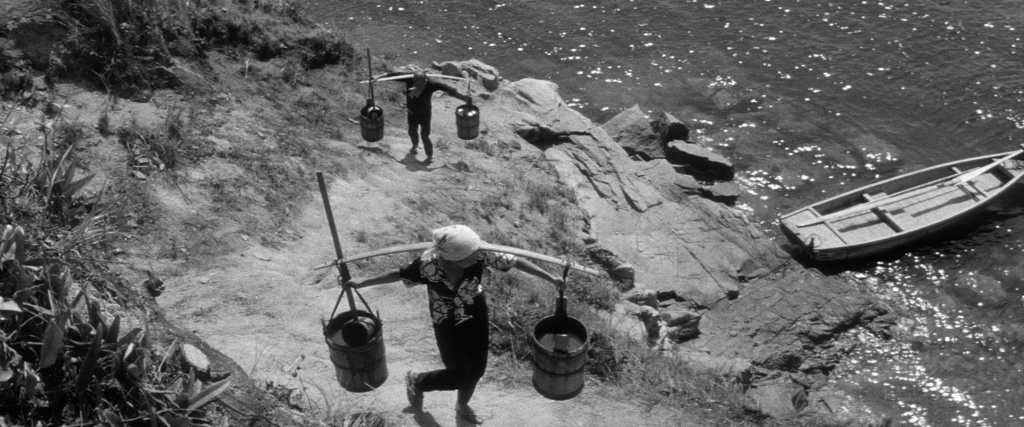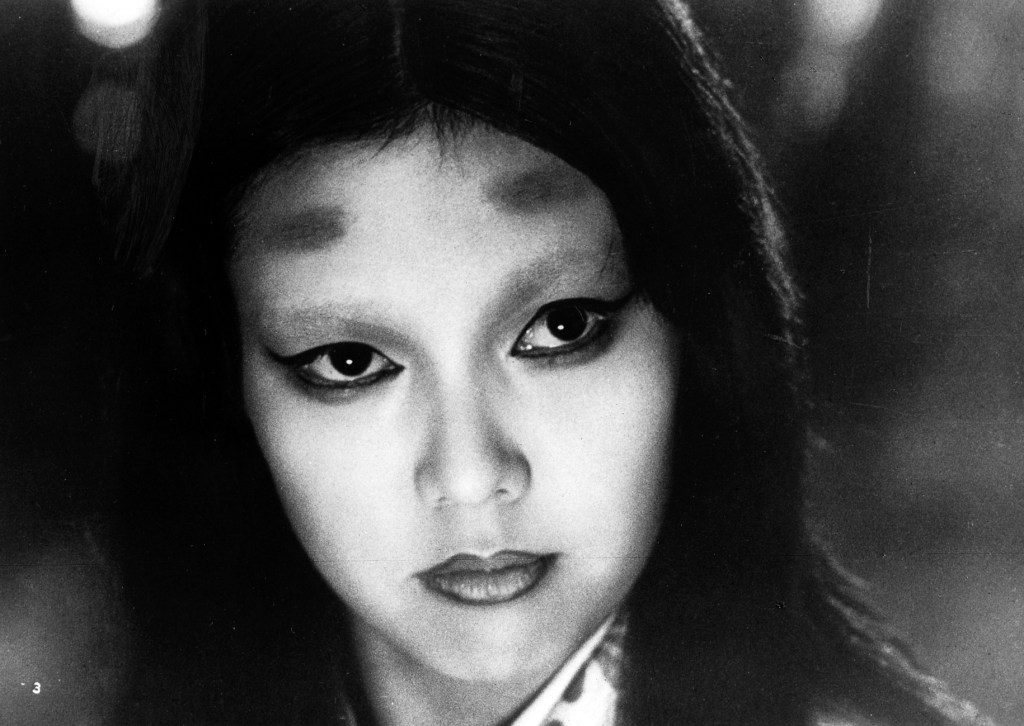Kaneto Shindo was a Japanese filmmaker celebrated for his socially conscious and atmospheric films such as Onibaba and The Naked Island. Shindo’s cinema often casts a spotlight on the resilience of ordinary people, probing universal themes of love, loss, and the human condition. His works also embody an uncompromising critique of post-war Japanese society, casting light on issues like poverty and discrimination. For instance, The Naked Island provides a poignant exploration of rural hardship and resilience against the backdrop of post-war Japan.
Shindo’s filmography stands out for its atmospheric storytelling, deep exploration of Japanese folklore, and empowering portrayal of female characters. His films create a rich atmosphere through an evocative combination of sight and sound, such as the rustling of the reeds in Onibaba, which signifies both the harsh environment and the inner turmoil of its characters. His engagement with Japanese folklore can be seen in films like Kuroneko, where he incorporates supernatural elements to reveal undercurrents of societal turmoil and human emotion. His films often centre around complex female protagonists, advocating for gender equality; for instance, Onibaba and Mother depict women navigating societal constraints, each striving for autonomy and empowerment.
Visually, Shindo’s films uniquely blend realism with elements of surrealism, creating an unforgettable cinematic experience. His use of non-professional actors, like those seen in The Naked Island, lends authenticity to his films, capturing raw emotions and lived experiences. With his atmospheric storytelling, use of evocative music and sound design, such as the haunting Shakuhachi score in Onibaba, Shindo immerses viewers in introspective journeys.

Kaneto Shindo (1912 – 2012)
Calculated Films:
- Children of Hiroshima (1952)
- The Naked Island (1960)
- Onibaba (1964)
- Kuroneko (1968)
Similar Filmmakers
- Hideo Gosha
- Hirokazu Koreeda
- Hiroshi Teshigahara
- Kenji Mizoughci
- Koji Shima
- Kozaburo Yoshimura
- Masahiro Shinoda
- Masaki Kobayashi
- Mikio Naruse
- Nagisa Oshima
- Nobuo Nakagawa
- Shohei Imamura
- Susumu Hani
- Tadashi Imai
- Tai Kato
- Tomu Uchida
- Toshio Matsumoto
- Yasujiro Ozu



Kaneto Shindo’s Top 5 Films Ranked
1. The Naked Island (1960)
Genre: Drama, Slice of Life, Family Drama

2. Onibaba (1964)
Genre: Jidaigeki, Psychological Horror, Folk Horror

3. Kuroneko (1968)
Genre: Kaidan

4. Children of Hiroshima (1952)
Genre: Drama

5. Tree Without Leaves (1986)
Genre: Drama, Coming-of-Age

Kaneto Shindo: Themes and Style
Themes:
- Human Struggle and Survival: Many of Shindo’s films delve deep into the trials and tribulations of ordinary people, often against the backdrop of extraordinary circumstances or settings. Films such as The Naked Island showcase the day-to-day challenges faced by a family living on a remote island.
- Supernatural and Horror: Shindo infused supernatural elements into his narratives, giving them a philosophical or allegorical bent. Onibaba and Kuroneko are prime examples of exploring human desires, fears, and morality.
- Socio-political Commentary: Throughout his career, Shindo didn’t shy away from addressing societal issues and taboos. Children of Hiroshima directly confront the aftermath of the atomic bomb.
- Sexuality and Desire: Often intertwined with his supernatural themes, Shindo’s films sometimes explore human sexuality, desire, and consequences, as seen in Onibaba.
Styles:
- Visual Minimalism: Shindo often employed a minimalist approach to his visuals, using natural settings to great effect. His choice to use black and white cinematography, even after the advent of colour, added to this stark simplicity.
- Sound and Silence: One of Shindo’s defining stylistic choices was his use of sound, particularly natural ambient sounds, juxtaposed against moments of poignant silence. The rhythmic repetition of certain sounds, like the rustling reeds in Onibaba, creates an almost hypnotic atmosphere.
- Narrative Structure: While many of his films feature a linear narrative, Shindo was also known for experimenting with time and narrative structures, weaving in flashbacks or non-linear sequences to add depth to his storytelling.
Directorial Signature:
- Collaboration with Composer Hikaru Hayashi: Many of Shindo’s films were intensified by the haunting scores of Hikaru Hayashi, establishing a signature atmospheric tension.
- Strong Female Characters: A hallmark of Shindo’s films is the presence of powerful, multi-dimensional female protagonists, who are often at the centre of the narrative, facing both internal and external adversities.
- Nature as Character: In several of Shindo’s works, nature isn’t just a backdrop but almost a character in itself. Whether it’s the vast ocean surrounding The Naked Island or the eerie reed fields of Onibaba, the environment plays an integral role in the narrative.
- Authenticity: Drawing from his own experiences and the historical and societal backdrop of Japan, Shindo’s films exude authenticity, making them both relatable and profound.
Kaneto Shindo – Great Director




